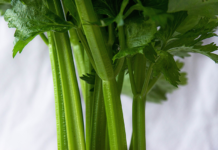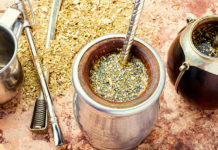by: Dr. Craig A. Maxwell

Before the early 1900’s, stocking up on a week or month’s worth of groceries meant a stop at the butcher shop, the fruit stand, the street vendor, and the local grocer. It may have taken a while to get what you needed but it was always fresh, healthy, and preservative-free.
The first self-serve grocery store went up in 1916 in the form of a Piggly Wiggly in Memphis, Tennessee. This new move toward convenience put local butchers and grocers out of business and made people forget where their food was coming from.
The year 1941 brought one of the world’s first heavily processed candies, M&Ms. In 1943, synthetic vitamins were added to bread with the purpose of enhancing its nutritional content. Instant coffee was introduced in 1945.
Slowly, over time, heavily processed food went from a couple of unusual items on the grocer’s shelf to thousands of food-like products.
Finding the healthiest foods in the supermarket can sometimes feel like you’re navigating a minefield. That’s why I created this guide.
How to Find the Healthiest Foods in the Supermarket
The supermarket has thousands of items competing for your attention. Food comes in bags, boxes, cartons, and packages of various shapes and sizes. Words like “natural” and “fat free” catch your eye with their bold colors and claims. It doesn’t make it easy to shop.
Here are my guidelines:
Walk the Perimeter
One of the first tips I give my patients is to walk the perimeter of the supermarket first. Start at the produce section and stock up on as many organic fruits and vegetables as you can. The more organic fruits and vegetables you have on hand, the less tempted you’ll be to snack on other, less savory items.
You can usually find nuts, nut butters, and hummus just outside the produce section of your favorite supermarket and they are very healthy for you. These food items are minimally processed and packed with sugar-stabilizing protein.
When you head into the meat section, choose organic and be sure to read labels carefully. Recent research has uncovered shocking information about organic products imported from China. Unlike American, Canadian, and European organics, there is no limit to how many dangerous heavy metals can be present in these foods.
A product can be legally labeled organic so long as the farmer does not add any pesticides or synthetic chemicals. Unfortunately, this does nothing to address environmental toxins such as contaminated irrigation water, chemical factory fallout, and chemtrails. China is one of the most environmentally polluted countries in the world. It is best for your health if you avoid consuming any food products from this country.
Also, it is important to understand the difference between farm-raised fish and wild-caught. Farm-raised fish is the most harmful type of fish to eat because it is loaded with antibiotics, growth hormones, dioxin, and other harmful chemicals. Just because it looks like ordinary fish, doesn’t mean it is. Always look for “wild caught” on the label.
As you’re walking past the meat aisle, you’ll come to the dairy section; a section you may have heard is terrible for your health. I’m happy to tell you this isn’t true. I advise my patients to stock up on foods such as organic yogurt, organic eggs, and organic butter. These foods are rich in healthy fat and protein to stabilize your blood sugar and help you lose weight. It’s not saturated fat that causes clogged arteries and early death, it’s trans fat.
Know How to Aisle-Shop
Now it’s time to walk down the aisles. Organic frozen vegetables and fruit are both convenient and less expensive than their fresh counterparts and good for your health, although I always recommend fresh if possible. Organic dried beans are inexpensive and nutritionally-dense, making them an ideal whole food. You can cook them in an hour on the stovetop and have them available as a meal, side dish or salad topping during the week.
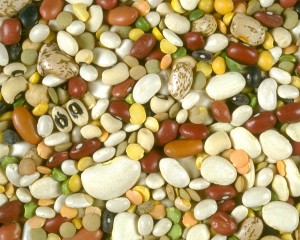
Grains like rice, millet, amaranth, and quinoa are inexpensive staples you can stock up on for weeks of meals. I recommend avoiding gluten-containing products such as wheat, rye and barley.
And just because you’re trying to eat healthier, doesn’t mean you have to give up some of your favorite snacks. It’s just a matter of choosing the right ones. If you’re craving potato chips, opt for a more natural variety with limited ingredients like potatoes, salt, and oil. When you want something sweet, head to the organic or special food section of your supermarket. There you’ll find organic dark chocolate, which is very good for your health.
Read Food Labels
Reading food labels is hands down one of the best things you can do to improve your health. It’s your key to finding the healthiest foods in the supermarket. When you read food labels, you’ll learn a lot about the food you’re putting into your body.
Is it Really Organic?
When choosing organic food, be sure the label says, “Certified Organic” or “USDA Organic” and that the product does not come from China. Oftentimes, food manufacturers will use the word “natural” in place of organic but it doesn’t mean the same thing. A “natural” food can be filled with synthetic chemicals; it only has to have one or two natural ingredients in it for it to be labeled as such.
Avoid GMO
When purchasing any food always remember to do your best to avoid genetically modified foods.

Steer Clear of Synthetic Sweeteners
When choosing boxed or pre-packaged food products, it’s important to be especially selective. You want to avoid synthetic sweeteners like aspartame (Equal, Nutrasweet), sucralose (Splenda), saccharine, acesulfame K, neotame, cyclamate, maltodextrin, and alitame. They are neurotoxic and potentially cancer-causing. Opt for products containing honey or stevia instead.
The ‘5 Ingredient Rule’
Another good rule to remember when selecting pre-packaged foods is the 5-ingredient rule. Most foods are minimally processed if they contain nothing more than 5 ingredients. Take those aforementioned potato chips. They only contain potatoes, salt, and oil. That’s it. Those are much safer to consume than a brand containing an entire paragraph of unpronounceable ingredients.
You can apply this rule to any convenience food you’re interested in purchasing. Read the label. If it contains more than 5 ingredients or if those ingredients are synthetic such as high fructose corn syrup or food dyes, put it back and look for something else.
The 15 Healthiest Foods in the Supermarket
Here’s my list:
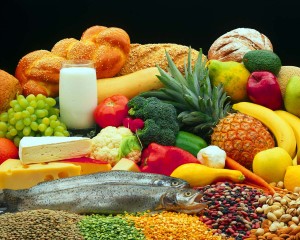
1. Organic fruits and vegetables
2. Nuts/nut butters
3. Hummus
4. Organic meat
5. Organic poultry
6. Wild-caught fish
7. Cooked dried beans
8. Whole, preferably gluten-free, grains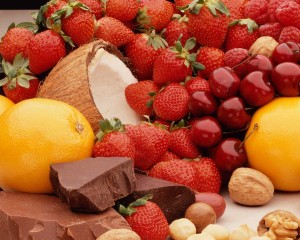
9. Butter (not margarine)
10. Olive oil
11. Coconut oil
12. Eggs
13. Organic yogurt
14. Tea
15. Dark chocolate
The first step to finding the healthiest foods in the supermarket is to understand that not everything you find there is actually food. There are many food-like products out there that can easily fool you with clever packaging.
No matter what it says on the front of the package, it is imperative you read the label on the back or side. You’ll find a lot of information there. That wholesome, delicious-looking snack on the front will wither under your careful scrutiny when you realize just how many synthetic additives it contains.
 Reading food labels and shopping in a different way than you’re used to can be a daunting task at first. The next time you have a couple of hours, visit the supermarket without a list. Start in the produce section and work your way around the perimeter of the store. Print out this guide and take it with you. Carefully read the labels on every product you pick up. If your favorite food contains a lot of unpronounceable synthetic ingredients, chances are, you can find a replacement in another aisle or at a health food store.
Reading food labels and shopping in a different way than you’re used to can be a daunting task at first. The next time you have a couple of hours, visit the supermarket without a list. Start in the produce section and work your way around the perimeter of the store. Print out this guide and take it with you. Carefully read the labels on every product you pick up. If your favorite food contains a lot of unpronounceable synthetic ingredients, chances are, you can find a replacement in another aisle or at a health food store.
Don’t give up. Finding the healthiest foods in the supermarket will take time at first but within a few months, you and your family will be healthier than you’ve ever been.
It’s worth it!







